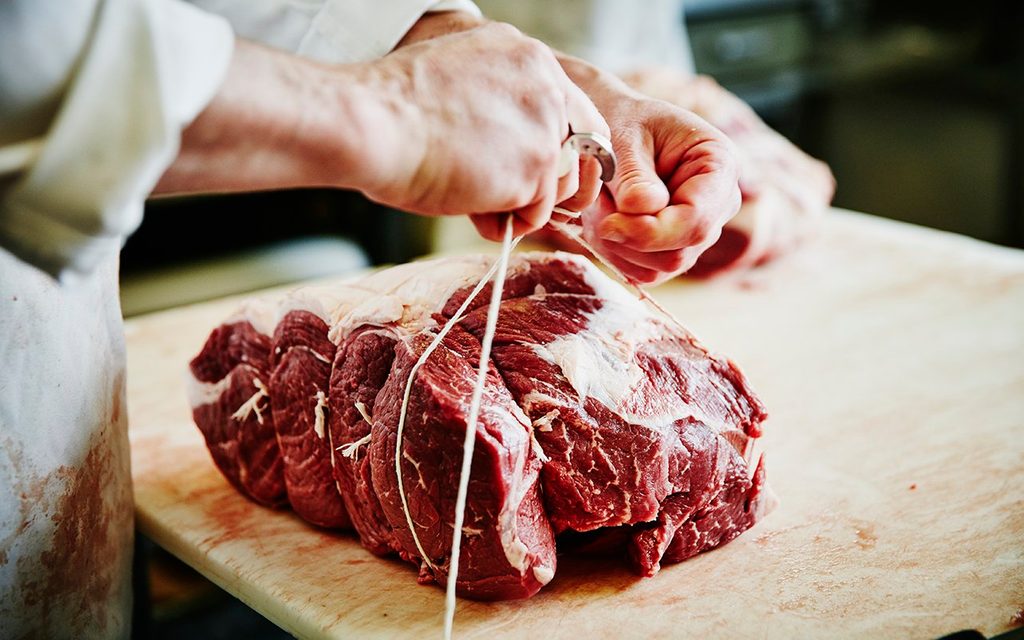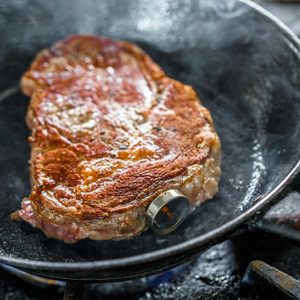What Is Butcher’s Twine?
Updated: Nov. 28, 2022

You've probably seen recipes that call for trussing a roast or whole chicken with butcher's twine. But what is it, exactly?
Butcher’s twine is an inexpensive tool used all the time in our sister magazine Taste of Home‘s Test Kitchen. It helps roasts and chicken cook evenly, and it’s also handy if you need to attach a bacon weave to a meatloaf. But what exactly is butcher’s twine? And what do you do if you don’t have any on hand?
What is butcher’s twine?
Butcher’s twine (also called cooking string or kitchen twine) is an oven-safe string made from 100 percent cotton. It’s most commonly used when cooking meat. Tying an irregular-shaped roast or trussing a chicken creates a uniform shape that helps the meat cook evenly. Butcher’s twine can also be used to roll up stuffed meat like mushroom-stuffed flank steak, hang salami for curing and bundle herbs for freezing or making stock.
When cooking, it’s important to use a twine that’s made from a natural fiber so it won’t melt when cooked at high temperatures. Cotton is the go-to material because it doesn’t impart flavors, aromas, or colors into the food as it cooks. Linen twine is also acceptable, and some people find it easier to tie, but it’s also harder to find.
What’s the difference between butcher’s twine and regular twine?
Twine can be made from several different types of natural fibers and synthetic materials, but not all of them are suitable for baking. Butcher’s twine is made from cotton, a food-safe, oven-safe material that’s strong enough to pull into tight knots. Some natural-fiber twines are oven-safe (like linen) while others are made with food-safe materials but burn easily, so they’re best for decorative purposes (like jute or hemp).
Synthetic twines made from polypropylene and polyester aren’t oven-safe, and they should be avoided for cooking. The twine you’ll find at the hardware store is likely made from synthetic materials, and it can impart unwanted color or flavor into the food.
What can be used instead of butcher’s twine?
The most readily-available substitute for butcher’s twine is unwaxed, unflavored dental floss. It won’t hold up to the heat of the grill, and it can definitely snap if you try to tie it too tightly, but it’ll work in a pinch. Toothpicks or skewers also work well for securing something like a stuffed chicken breast, and a strip of 100% cotton cheesecloth or cotton gauze could be used truss a chicken or a roast if need be.
Some people swear by silicone roasting bands, a reusable alternative to butcher’s twine. They’re food-safe and can be used in the oven to temperatures of at least 600°F. You will need to be careful when removing them from hot meat, though.
You can also look for creative ways to skip the twine. When cooking a whole chicken, bend the wings back and fold them under the chicken. Then, poke a tiny hole in the loose skin around the cavity. Tuck the legs into the slits, being careful not to tear the skin as you go.
Where do you buy butcher’s twine?
You should be able to find butcher’s twine in most grocery stores, and it’s often available at cookware stores, too. Be careful about the twine sold at hardware stores, as most of them are made from a cotton-polyester blend that’s not suitable for cooking. If you can’t find twine near you, look to online retailers (like this $5 spool at Target). Next, check out these kitchen gadgets you’ll wish you had years ago.
Arrayskyword_tracking_tag[/cf
